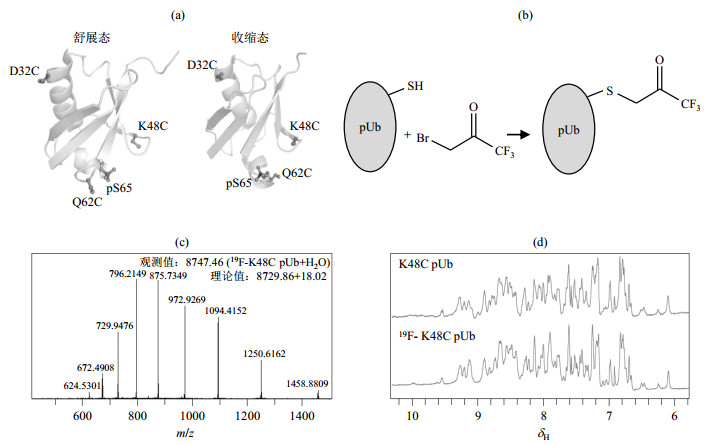图2. (a) pUb舒展态和收缩态的示意图,用于连接BFA探针的半胱氨酸突变位点(D32C、K48C、Q62C)使用球棍模型显示,每次实验只突变其中一个;(b) BFA探针连接pUb突变体的示意图,BFA通过取代反应连接于pUb表面的半胱氨酸突变位点;(c)利用高分辨质谱测得的19F-K48C pUb的分子量为8 747.46,与理论分子量与一个水分子的分子量之和一致;(d) 19F化学标记K48C pUb前后的氨基氢的1H NMR谱,反应前后其轮廓未发生明显变化(25 ℃)
Fig.2. (a) pUbs in the relaxed state and retracted state are shown. The cysteine mutation sites (D32C, K48C, Q62C) for attachment of the BFA probe are displayed as ball and stick model, one mutation at each time; (b) Scheme of BFA reaction with pUb, BFA is connected to the cysteine mutation site on the surface of pUb through substitution reaction; (c) Mass spectrometry is used to confirm the reaction between BFA probe and K48C pUb, the result showed that the molecular weight of the protein after the reaction was 8 747.46, which was consistent with the sum of the theoretical molecular weight plus a water molecule; (d) The amino regions of 1H NMR spectra of K48C pUb before and after 19F chemical labeling, indicating no obvious change of the spectrum profile (25 ℃)

